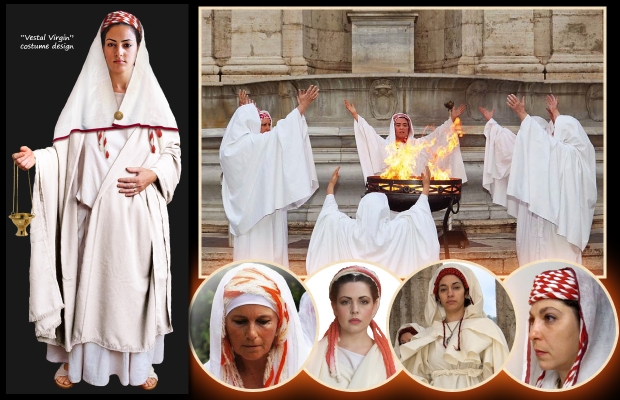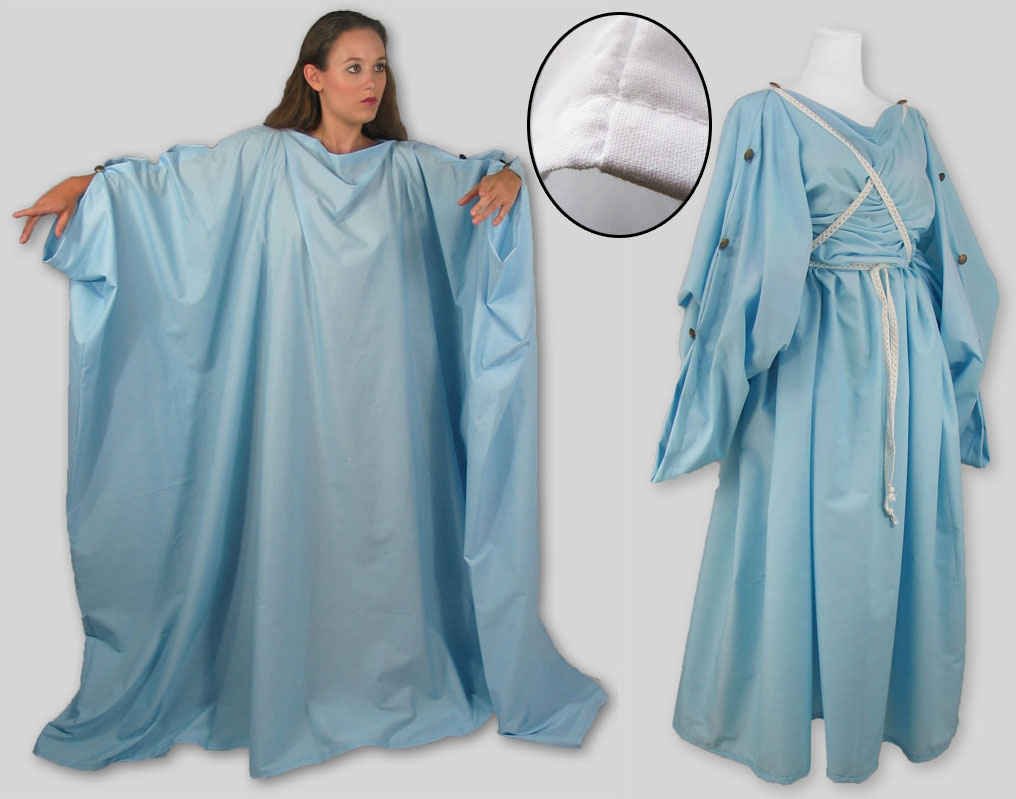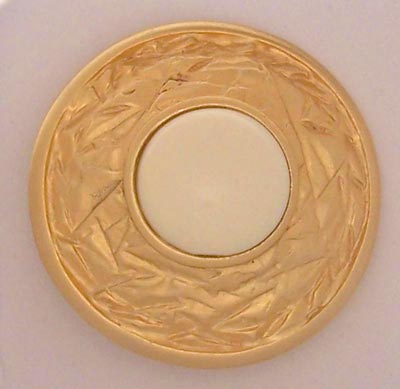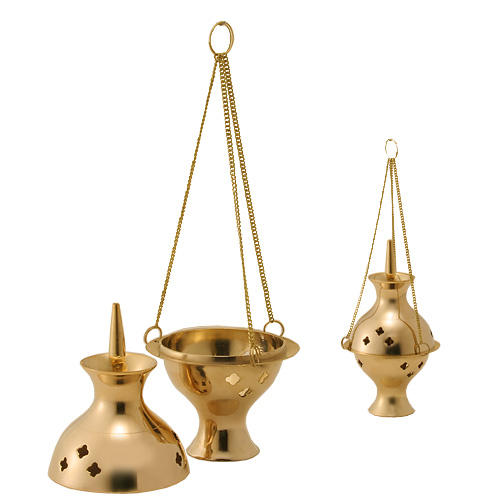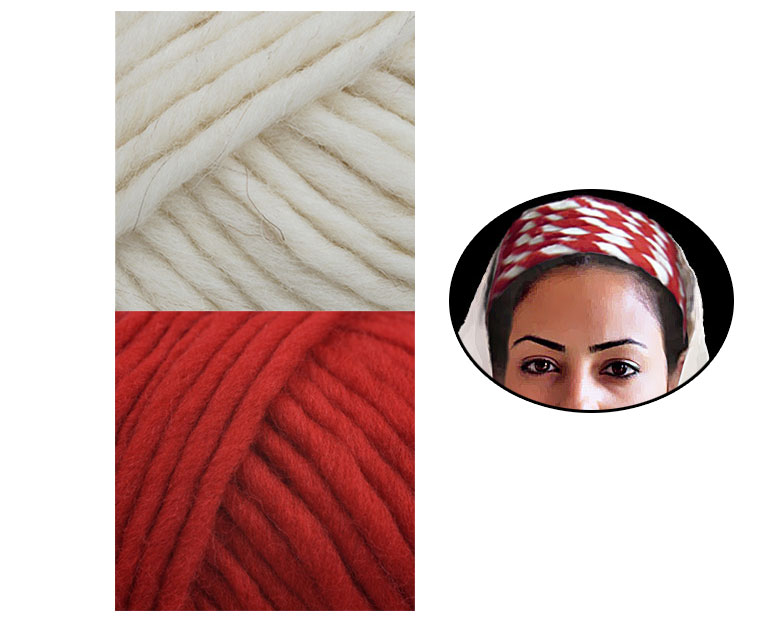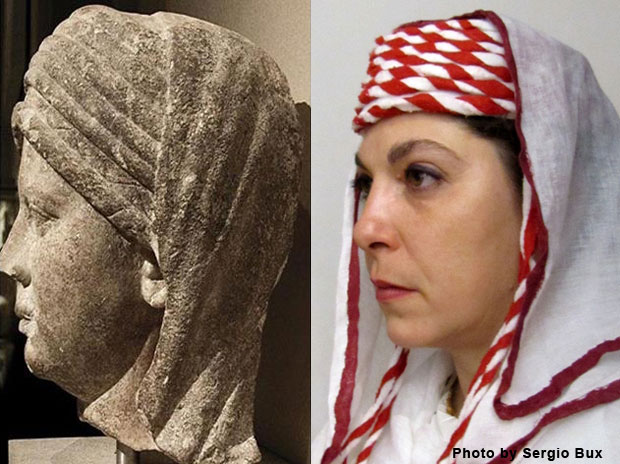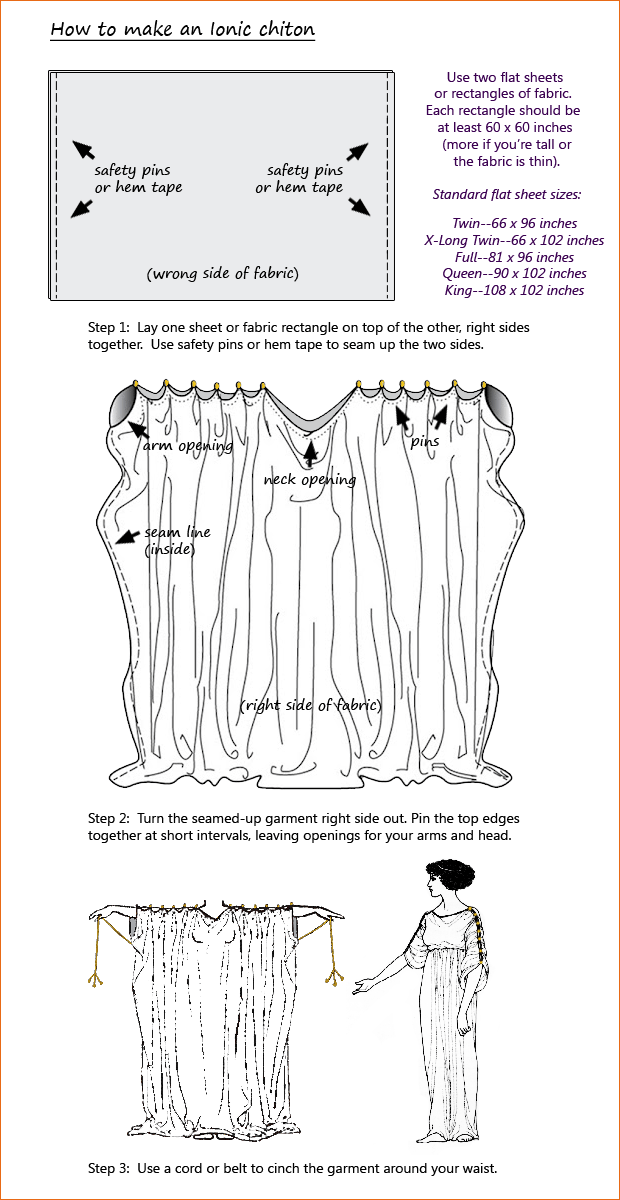The Vestal Virgins were the six priestesses who tended the sacred flame of Vesta, goddess of the hearth, in ancient Rome. They were far and away the most privileged women in Roman society, and in fact they were the only women who were granted the basic legal rights that male citizens possessed automatically. Unlike other Roman women, the Vestals could make wills, vote, and live free from the control of their male relatives. What they couldn’t do was have sex. Each Vestal took a 30-year vow of celibacy as a child, and the punishment for breaking that vow was death. A rather horrible death, too: the unchaste Vestal was buried alive.
But aside from the whole buried-alive thing, the Vestals enjoyed an enviable position at the top of Roman society. They had enormous prestige—everybody considered them holy—and extraordinary privileges. Their very existence was thought to be essential to the health of the Roman state. They traveled through the city accompanied by special bodyguards, had the right-of-way everywhere they went, and occupied seats of honor at public games and performances. Their persons were sacrosanct, and the penalty for injuring a Vestal was death. They also lived in a lavish mansion staffed by servants. All in all, it wasn’t a bad trade-off for celibacy.
Our costume is based on ancient descriptions of the Vestals’ clothing, with a generous assist from the archaeologists and modern reenactors who have done so much to bring those descriptions to life. The pieces we suggest, from left to right:
 1. White tunic. The Vestals wore a tunic of fine white linen that was probably similar to the Ionic chiton of ancient Greece. This convenient reenactment version is available in polycotton, muslin, or gauze. Just make sure you get it in white. You can also make your own tunic with two flat sheets; scroll down to the bottom of this post for instructions.
1. White tunic. The Vestals wore a tunic of fine white linen that was probably similar to the Ionic chiton of ancient Greece. This convenient reenactment version is available in polycotton, muslin, or gauze. Just make sure you get it in white. You can also make your own tunic with two flat sheets; scroll down to the bottom of this post for instructions.
2. White flat sheet for the palla. The palla was the Roman woman’s counterpart to the toga. It was just a rectangle of fabric about the size of a modern twin flat sheet, which is exactly what we suggest you use. The palla was commonly made of wool, but could also be made of linen, cotton, or silk. Wrap it around you like a big shawl in whatever way seems comfortable; fortunately it didn’t require the complicated draping and folding that the man’s toga did.
3. Fine Italian white virgin wool crepe with crimson felt ribbon for the suffibulum. The suffibulum was the veil worn by Vestals. It was made of white wool and bordered with “purple,” which was really what we would call red. Along with the infula (#6), it was probably the most distinctive and sacred part of the Vestal’s attire. You can of course use any plain white fabric—even a cut-up sheet or pillowcase—but for an authentic touch, use real wool. One yard of that white wool fabric will give you a 58″ x 36″ rectangle. Get two yards of the crimson felt ribbon and attach it to the cut edges of the fabric with Res-Q tape or fabric glue. If you want to edge the entire rectangle in the felt ribbon, get six yards. Drape the finished suffibulum over your head and pin it at your chest with the fibula (next).
4. Round brooch for the fibula (from eBay). The fibula was the fastening pin of the ancient world. There were two basic kinds: the bow fibula, which looked like a safety pin, and the plate fibula, which was flat like a modern brooch. Vestals seem to have worn the plate kind, possibly set with precious stones, to pin the suffibulum closed on the chest. Just get a simple round brooch like this with a non-faceted stone (no facets in Roman times).
5. Thurible (hanging censer). For burning incense or carrying the sacred flame of Vesta with you. These inexpensive brass censers are made in India. They come in a variety of sizes, and are also usually available at Amazon and on eBay.
6. Super bulky wool yarn in red and white for the infula. The infula consisted of strips or braids of red and white wool wrapped around the head, with the free ends hanging down as loops or streamers on the shoulders. The style of the infula probably varied over the centuries, and modern reenactors all have their own particular ways of recreating it. Our inspiration is this version by A.R.S. Historia Romana, an Italian reenactment group:
Get one skein each of the red and white yarn and ply or braid them together. Wrap the resulting two-tone rope around your head several times like a crown, and tie it off in the back. Let the free ends hang down over your shoulders in front. Then drape the suffibulum over your head and secure it to the infula with discreet pins.
Shoes: The Vestals wore white sandals or shoes made from the skin of sacrificial animals, which is definitely not something we’re interested in recreating. Instead we suggest these nice vegan-friendly gladiators from Shiekh:
Hair: The hairstyle worn by the Vestals was an elaborate arrangement of braids called the seni crines. Hairdresser-archaeologist Janet Stephens has done a superb job of recreating it:
But if you can’t manage the seni crines, don’t worry; the suffibulum and infula will cover up your hair anyway.
How to make an Ionic chiton: The Ionic chiton was the larger and more complicated of the two basic styles of Hellenistic chiton. The smaller Doric chiton was narrow and sleeveless; the Ionic chiton involved twice as much fabric, with the extra length used as sleeves. Both were popular in the ancient world. (The Latin word tunica is a cognate of the Greek word chiton.) For the Ionic chiton you’ll need two flat sheets or fabric rectangles, some safety pins or hem tape, and pins for the top edge—either safety pins or fancy brooches. You’ll also need a cord or belt to cinch your waist.
Finally, a note for those familiar with ancient Roman clothing: Although many commenters have assumed that the Vestals also wore the stola over their tunics, this is by no means certain (Staples 1998; DiLuzio 2012). Given the historical ambiguity and the arguments of those who believe the Vestals did not wear the stola, we think the safest bet is what we’ve proposed here: a voluminous white tunic with a palla wrapped around the body.
Illustration credits: Our main illustration shows various recreations of Vestal attire by modern reenactors and archaeologists. The large photo is of a ceremony performed by the Associazione Culturale Gruppo Storico Romano. The small round images at the bottom are, from left to right: a Vestal reenactment by Les Amis de Kleio en Provence; the Vestal hairstyle recreation by hairdresser-archaeologist Janet Stephens (the model is Rachael Pietra); Adriana Serpi of the Associazione Culturale S.P.Q.R. in costume as the chief Vestal; and a Vestal reenactment by A.R.S. Romana Historia.
And: Special thanks to the anonymous backer who sponsored this costume through our Kickstarter campaign. Thank you!

